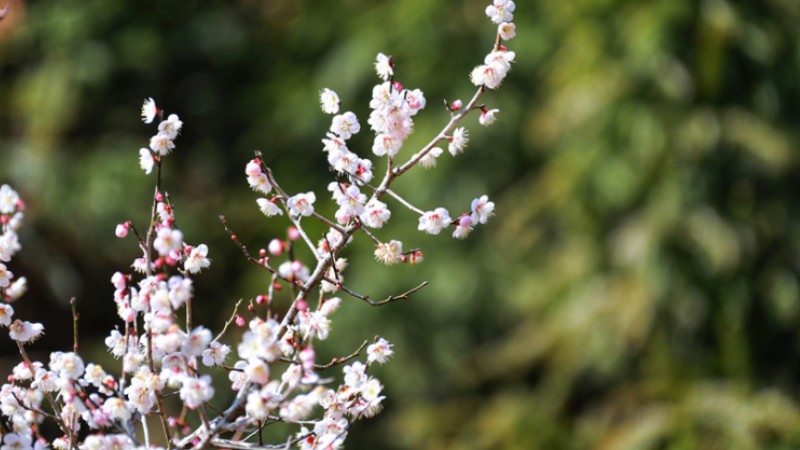China’s all-round rural revitalisation can apply to SA
In late December 2021, President Xi Jinping delivered a keynote address at the two-day Annual Central Rural Work Conference. The areas of agriculture and rural development in the People’s Republic of China, are fundamental in terms of policy announcement.
What has been the experience of China in advancing rural revitalisation and consolidation of agricultural outputs? Which lessons can possibly be imparted by this country for South Africa as it grapples, seemingly unendingly so, with the “historical injustice” of land deprivation and food insecurity?
President Xi declared boldly that “food security is an important foundation for national security ”. Linking the two is included in China’s 14th Five-Year Plan (2021-2025), which articulates clearly the country’s social and economic objectives. This includes maintaining yearly grain production of more than 650 million tons.
Linking food security and national security are non-negotiable’s in this country of 1.4 billion people, who comprise close to one-fifth of the world’s net population occupying less than 9% of the world’s arable land.
In pursuit of this latest Five-Year Plan, it is not surprising that in 2021, China’s grain output reached close to 683 billion kilograms, an improvement of 13.4 billion from the 2020 financial year.
Most importantly though, this grain growth has been consistently produced in seven consecutive years. With this in mind, the Rural Work Conference was unified in purpose that the figures for 2022 will be more than 650 billion kilograms.
Given the history of China surviving through periods of food insecurity, President Xi maintained, in his memorable aphorism, that at all times, “Chinese food must be installed in the rice bowl of the Chinese”.
As a developing country, the People’s Republic of China is acutely aware how failure to guarantee food security and rural revitalisation can be for social stability.
Of course, this hinges to a great extent on ensuring there is relatively stable domestic prices and China gradually ceases its over-reliance on certain food imports such as soybeans.
At the Rural Conference it was communicated how the country remains intent on building more than 6 million hectares of high-standard farmland by boosting the relevant industries and accelerating rural-urban integration.
Making agriculture a policy and programmatic cornerstone for China, is directly connected to all-round rural revitalisation. What are the other constituent elements of this?
It talks to China building on its unprecedented victory of poverty alleviation whereby the country has lifted, in eight years, more than 98 million rural people out of poverty and removed 128,000 villages and 832 impoverished counties out of poverty.
As South Africa grapples with land, hunger and food insecurity, there is much to admire and learn from China. The Presidential Advisory Panel on Land Reform and Agriculture, in its May 2019-released Report, was unambiguous in addressing the historical injustice matter.
The report identified the slow land reform as counter-productive to post-1994 efforts at nation building.
Some of the central factors mentioned in the report, that need to be attended to urgently, includes “insecurity of tenure that results in economic exclusion (whereby) South Africa has over 60% of citizens whose land/property rights are neither recorded nor registered”.
It does not augur well for social cohesion when “the majority of South Africans are either asset-poor or sit with unrecorded or devalued assets”.
This runs counter to the aim of the democratic dividend delivering on human dignity black farmers who constitute a mere 10% of commercial producers, as highlighted by the National Agricultural Marketing Council.
Therefore, there is much work to be done to realise the goals set out in Chapter 6 of the National Development Plan.
Quite clearly, China is doing something right in enabling the incomes of rural residents to outpace those of urban residents in 11 consecutive years. This narrowing of the urban-rural divide has also seen China building and upgrading more than 2 million kilometers of rural roads between 2012 and 2020.
∎ Like almost every other record achievement in China, it boils down to first, policy consistency that is implemented and monitored for its impact regularly.
∎ Second, political and executive will that is communicated and translated from provinces to municipalities.
∎ Third, ground-up involvement of people themselves as liberators of their own development and transformation.
These non-negotiables in the People’s Republic of China are not unique to that country, but are universal values and principles that can be replicated in South Africa.
(Professor Tembe is a sinologist and founder of SELE Encounters.)
Photos
Related Stories
- South Africa not to impose travel restrictions for other countries
- People visit light fair in Potchefstroom, South Africa
- Africa Tech Festival 2022 kicks off in Cape Town, South Africa
- In pics: jacaranda trees in full bloom in Johannesburg, South Africa
- China’s Longyuan brings South Africa’s youth new hope
Copyright © 2023 People's Daily Online. All Rights Reserved.









